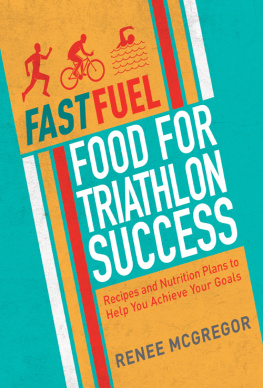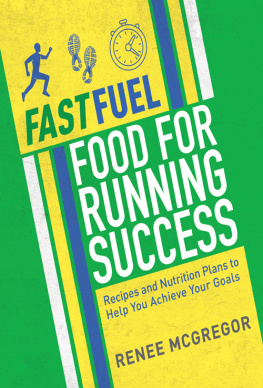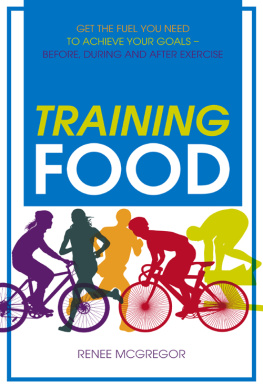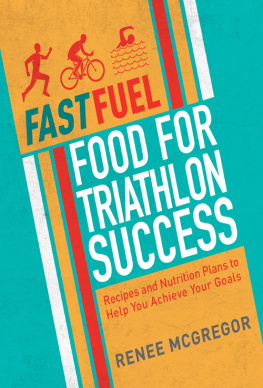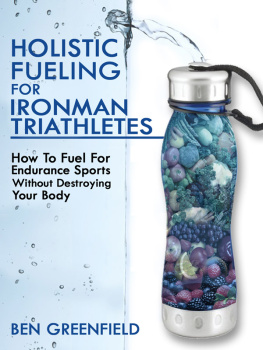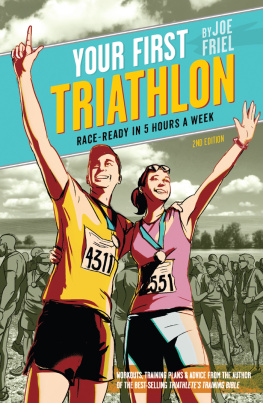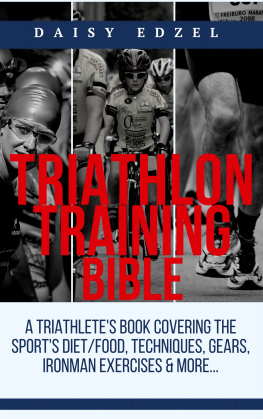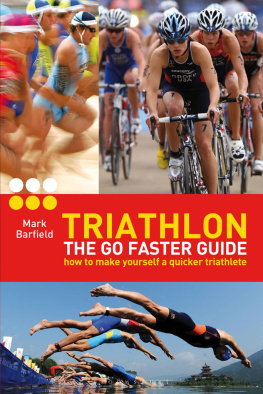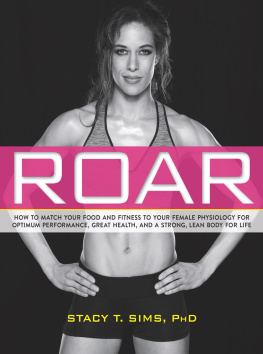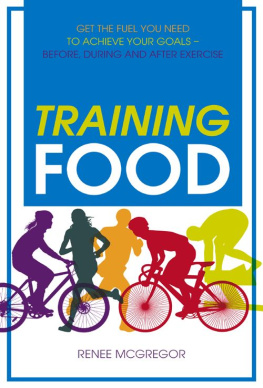FASTFUEL
FOOD FOR
TRIATHLON
SUCCESS
INTRODUCTION
This book is for triathletes of all levels elite, recreational, young or old, experienced or new to sport. It is for those of you who want to:
>>> Achieve your performance goals, whether thats improving your weekly trial time, bettering your personal best time in the Sprint to Olympic distance, or venturing into Ironman territory.
>>> Stick to a training plan while also trying to earn a living and juggle family commitments; creating meals that ensure you can fuel your evening training session, but that benefit and are enjoyed by the whole family.
>>> Improve your knowledge of nutrition as well as de-bunking some of the common myths. For example, you may know that you need to eat carbohydrate for energy and protein for recovery, but struggle to understand how this translates into real food options.
>>> Increase your confidence by knowing you are eating the right foods to fuel your body and maximize your training, without over-reaching and potentially risking injury or illness.
There is so much information about nutrition available but not all of it is backed up by science. As a registered dietitian and sports nutritionist, I have to ensure that all the advice I provide is evidence based that is, there has been reliable research around the subject to make the claims credible and accurate. My job is to make the science accessible. Through researching all the latest studies and interpreting them into practical application, I produce recipes and nutrition plans that work for all lifestyles and budgets.
No matter whom I am working with, I see it as a collaborative journey. I first help athletes to understand the fundamentals of good nutrition and then, with practical suggestions, piece it all together to develop a nutrition plan that works for them.
This is what I am offering you here a practical, easy-to-follow, stepby-step, scientific book about sports nutrition, including simple but mouthwatering recipes, that you can tailor to your training needs.
>>> is a practical guide to what to eat, when to eat and how much to eat. We also look at how your body metabolizes food into fuel, and how it can adapt to provide fuel for different levels of training intensity.
>>> shows the different fuelling requirements for different distances and training intensities and how making the right nutritional choices will benefit you. This section also includes sample menu plans, using the recipes from the book to demonstrate practically how to make appropriate choices.
>>> highlights the importance of maintaining the well-oiled machine we call our body; it looks at issues relating to injury, illness and over-reaching and demonstrates how the right nutrition can combat these potential problems.
There are fun and practical quick tips throughout the book that deliver upto-date and evidence-based sports nutrition in bitesize and accessible ways.
CHAPTER 1
FUELLING BASICS
FROM SPRINT TO IRONMAN
There is so much hype surrounding sports nutrition these days; the science is evolving, with an increasing number of studies proving that nutrition plays an important part in performance gains. This chapter will help you to understand why correct fuelling around your triathlon training is important to achieve your goals and optimize your performance.
You will probably have some idea of the basics of good nutrition for example, that you should eat carbohydrate for energy, protein for repair, fat to absorb important nutrients, and vitamins and minerals for a healthy immune system. In this chapter we will look at these factors in more detail and I will explain how the quality of these nutrients, and when you consume them, plays a fundamental role in sports nutrition.
So, whether your weekly training is less than 10 hours or over 20 hours, the basic principles of good nutrition are applicable to all; whether youre a novice or an Olympian, a Sprint triathlete or Ironman, you need to begin with a strong nutritional foundation. Once this has been established, you can move on to a more detailed nutritional plan, helping to make you stronger, fitter and more able to meet your performance goals.
BEFORE YOU READ ON...
When working with sports nutrition, it is normal to calculate the nutritional requirements for each macro-nutrient to ensure that training fuel demands are being met. These are converted based on your weight in kilograms, so throughout the book I will be referring to grams of nutrients per kilogram of your body weight, or as you will see it displayed: g/kg BW. Therefore, a great starting point would be to calculate your weight in kilograms. Most home scales will have conversions. Using metric values ensures greater accuracy.
THE SPECIFICS OF SPORTS NUTRITION
The main difference between healthy eating and sports nutrition is the attention to detail and the fine-tuning of nutrient delivery. In healthy eating, the ultimate goal is to promote long-term good health and fend off increased risks of disease, while maintaining a balance so that food is still enjoyable. In comparison, sports nutrition, although still based on healthy eating guidelines to an extent, is performance driven. It is about getting the best out of your training over the three disciplines, whether thats an early-morning swim session followed by a lunch-time run, or a three-hour bike ride at the weekend. Tailoring your nutrition choices to your training, including the intensity, frequency and volume, will ensure that you have:
1 > Put the right amount and type of fuel into your body to meet the demands of your training session, allowing you to perform to your best ability (we will go into this in more detail when we discuss different intensity levels of training in )
2 > Made the correct choices after your training session, helping your body to recover, repair and adapt
The key to good sports nutrition is both preparation and organization; fundamentally, to achieve your goal you need to tailor your nutrition to the exact training session. Its not just about energy in and energy out. By just meeting energy demands, you may be able to carry out all your training but you may not see any actual improvements in your day-to-day training and overall performance.
Making good nutritional choices will ensure that the following adaptations occur from training:
>>> Increases in strength and lean muscle mass
>>> Good consistency at each training session, ensuring you can conduct each one to the best of your ability and progress your performance
>>> Good sleep patterns, a good mood and high energy levels
TRAINING NUTRITION
So what types of food should you eat before a training session? Training is the stimulus that sends messages to your muscles to work at a specific level. In order for this stimulus to work effectively, you will need to feed it appropriately. What you feed your body before training will very much depend on what the session is and its intensity.
Like most people you probably eat carbohydrate before you exercise, to give you energy. However, when you go for a 45-minute swim, do you ever stop to think about how much carbohydrate you really need? Would the choice be different if you were going out to swim 45 minutes hard or if you were just going for a social recovery swim with some friends? The reality is that you would need a lot less carbohydrate, in fact probably none, if you were just going for a recovery swim, but your body would struggle to maintain a high intensity swim for 45 minutes, without carbohydrate.
Next page
